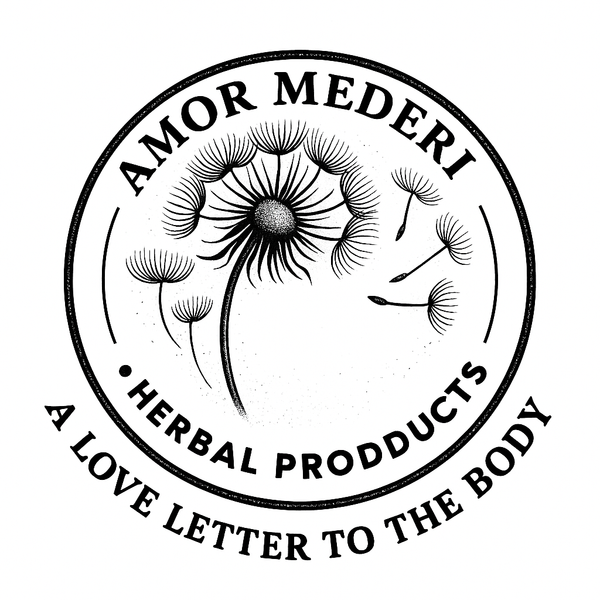
The Lasting Imprint of Early Trauma: Healing the Cortisol-Wounded Body
Childhood is meant to be a season of safety and discovery—but for many, like myself, it begins with rupture. When the body learns early that the world is unsafe, it adapts through a stress system that never truly powers down. Science is now showing what traditional healers have always sensed: trauma in childhood leaves deep biological grooves—etched in cortisol, immunity, and spirit.
The Science of Trauma, Cortisol, and Chronic Illness
When a child experiences neglect, abuse, or persistent insecurity, the stress-regulating system of the body—the HPA axis—goes into high alert. This causes the hormone cortisol to flood the system too often or at the wrong times.
Over time, two maladaptive patterns can emerge:
• Hypercortisolism – too much cortisol, linked to anxiety, insomnia, inflammation, and immune suppression.
• Hypocortisolism – too little cortisol due to long-term overdrive, linked to fatigue, pain, depression, and autoimmunity.
These changes don’t just affect mood—they shape how the immune system works, how we recover from illness, how we feel pain, and even how our genes express themselves. This is how early trauma becomes chronic disease.
What is the HPA Axis? : Basically It's your Body's Stress Highway. It's your stress response system. It stands for:
• Hypothalamus (in your brain)
• Pituitary gland (just under the brain)
• Adrenal glands (on top of your kidneys)
Together, these three parts talk to each other every time you experience stress. They tell your body to release cortisol, the main stress hormone. Cortisol raises blood sugar, increases alertness, and prepares you to either fight or flee.
That’s fine in small doses. But for a child living with ongoing trauma, neglect, or instability, the HPA axis becomes overactive. Over time, this leads to cortisol dysregulation—either too much or too little at the wrong times.
Trauma, Cortisol, and Illness
When the stress system stays activated in childhood, it creates long-term ripple effects:
Cortisol patterns shift – Some people stay “wired” (high cortisol), while others burn out and crash (low cortisol). The immune system weakens, and chronic inflammation becomes the norm. Insulin resistance develops and the body can’t regulate blood sugar properly. Sleep, mood, and digestion suffer – Because cortisol controls all of them.
What begins as a coping mechanism becomes the root of fatigue, anxiety, autoimmunity, stubborn belly fat, depression, and blood sugar problems later on in life.
How Insulin Fits In
Insulin is the hormone that helps sugar (glucose) get from your blood into your cells. But cortisol tells the body to keep blood sugar high—just in case we need to run from a threat.
When cortisol stays elevated for too long, the body starts ignoring insulin’s signals. This is called insulin resistance—and it’s a major contributor to:
• Weight gain around the belly
• Polycystic ovarian syndrome (PCOS)
• Type 2 diabetes
• Fatigue after meals
• Sugar cravings
• Mood crashes and brain fog
So if you’ve had early life trauma and now struggle with energy, weight, blood sugar, or mood—it’s not your fault. Your body has been stuck in survival mode.
Some key findings from current research:
Blunted cortisol responses in adulthood are strongly linked with childhood trauma, especially in women.
Trauma-induced changes to the HPA axis are implicated in fibromyalgia, depression, cardiovascular disease, and immune dysregulation, as well as epigenetic changes—such as methylation of stress hormone receptor genes— this may pass down across generations.
The Healing Path: Herbs and Spirit in Restoration
While science maps the damage, traditional medicine offers a roadmap to repair. Herbs can help recalibrate the stress response, soothe the nervous system, and support the organs most affected by cortisol’s imbalance—especially the adrenals, liver, heart, and gut.
🌿 Herbal Allies for Cortisol Recovery
• Ashwagandha (Withania somnifera) A deeply restorative adaptogen. Helps normalize cortisol whether high or low. This herbal ally is a tonic for depleted adrenals and stress-worn nervous systems.
• Licorice Root (Glycyrrhiza glabra) An adrenal tonic, licorice may help with fatigue, and chronic exhaustion. Licorice also supports and heals the digestive tract lining and can support gut integrity. (Avoid if you have high blood pressure).
• Tulsi (Ocimum sanctum) Calms the spirit and balances mood. Helps regulate cortisol and supports emotional resilience after trauma.
• Skullcap (Scutellaria lateriflora) A nervine for those stuck in tension or restlessness. Particularly helpful for sleep issues rooted in early emotional wounding.
• Passionflower (Passiflora incarnata) Eases racing thoughts and over-vigilance. Useful where trauma has led to hyperarousal or panic.
• Ginger – Anti-inflammatory and helps stabilize digestion and blood sugar.
• Oatstraw (Avena sativa) – Deeply nourishing for long-term nervous system healing. Replenishes adrenal glands and nervous system reserves
• Nettle leaf (Urtica dioica) Endocrine and adrenal tonic, supports insulin sensitivity.
• Cinnamon (Ceylon) – Supports insulin sensitivity and blood sugar control.
Lifestyle Tips for Cortisol & Blood Sugar Balance
• Eat regularly. Now, I could say ... with good quality protein, healthy fats, and complex carbs to keep blood sugar and cortisol stable, but I've been doing this far too long to believe there is 'one size fits all' dietary advice. Myself, I rarely eat carbs, but what I can say... is learn to listen to your body. Avoid fake foods, if your Grandmother wouldn't recognize the ingredients.... don't eat it. Skipping meals, processed food and excess caffeine only adds to the problem.
• Focus on nervous system regulation daily: gentle breathwork, time in nature, and real rest help calm the HPA axis.
• Prioritise sleep with consistent bedtimes, screen-free evenings, and a dark, quiet sleep space.
• Move your body gently and regularly—walking, stretching, and light strength training support insulin sensitivity without overstimulating the stress response.
• Shift stress perception with journaling, connection, gratitude, and healing practices that help resolve root trauma patterns.
The Spiritual Wound of Early Trauma
Cortisol dysregulation is not just physical—it is a soul wound. A child who had to constantly brace for threat does not learn how to rest, how to feel safe inside their own body. Healing means more than fixing the hormone pattern—it means rewriting the inner story.
Spiritual Approaches to Healing:
• Ritualized Safety. Create daily rhythms that remind the body it is no longer in danger—morning grounding, evening tea, moonlight walking, prayer, or breathwork.
• Trauma-Specific healing practices like inner child work can restore the body's lost sense of safety. These are the modern expressions of ancient soul retrieval.
• Grief & Forgiveness Ceremonies. Holding space to acknowledge what was lost in childhood can unburden the spirit and help rewire survival-driven patterns.
• Plant Spirit Connection. Work intentionally with herbs not just for their constituents, but for their spiritual medicine. Spend time with the plants, thank them for their gifts and ask them permission to know their medicine. Let them teach you how to soften.
A New Way Forward
The body remembers what the mind forgets—but it also remembers how to heal.
If your system still flinches from a childhood long gone, know this: the story can be rewritten. With the steady hands of herbs, the breath of ritual, and the return of your own inner safety, the tide of cortisol-born illness can begin to turn.
You are not broken. You are adapting. And now, you are returning.
